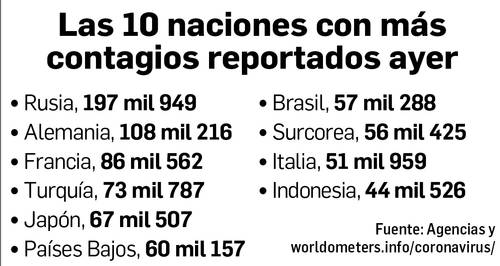The Independent, Afp and Ap
Newspaper La Jornada
Monday, February 14, 2022, p. 13
London. At the start of the covid-19 pandemic, Stanford University psychology professor Jamil Zaki described the experience as the greatest collective trauma anyone alive has ever experienced
because the main feeling we were dealing with was pain for the relatives we have lost, the vulnerability for what we can easily lose and the lack of control prevails over it
.
Yet nearly two years into battling endless lockdowns and social restrictions, that pain and anxiety may have been replaced by numbness and detachment, which experts say is the best way for the human body to process what has happened.
emotional numbing
Feeling numb is an emotional response to being overwhelmed, and the pandemic has increasingly led us to feel hopeless. Being emotionally connected to the situation is exhausting, and falling asleep gives us a break
explains therapist Sally Baker. It is not a conscious response; the blunting of our emotions by the pandemic is a response that is generated in our reptilian brains
which is the oldest part of the brain in evolutionary terms, responsible for the primitive mechanism of fight or flight
and therefore anxiety.
When someone overwhelms themselves to avoid excess stress on the body, it simply shuts down and the result is apathy or numbness. It means that we are becoming introspective. Introspection is not healthy, because with it comes mental illness and overthinking
.
Psychologist Emma Kavanagh, who researches the effects of isolation on scientists in Antarctica, believes we are witnessing a full-scale psychological hibernation as our bodies seek to cope with the amount of pressure that has been placed on us in the past year. recently, particularly to parents or caregivers, who have had to prioritize the well-being of others.
Given the condition of emotional exhaustion, equivalent to the widespread syndrome burnout, that usually arises in work environments, therapists recommend exercising and spending time with family and friends, without breaking the minimum hygiene and safety conditions to avoid contagion.
On the other hand, the average daily number of infections in the United States fell to its lowest point since Christmas, with 215,000 new cases each day, 71 percent less than in the past three weeks.
However, almost 99 percent of US counties report high transmission, and many citizens test at home but do not report their results to the health sector, so the total infected may be higher.
More than 4 million doses of the Abdala anticovid vaccine, the first conceived and produced in Latin America, were applied to children and adolescents in Cuba and Nicaragua. The balance of the pandemic is: 5 million 813 thousand 891 deaths and 411 million 311 thousand 398 infections, according to Johns Hopkins University.















